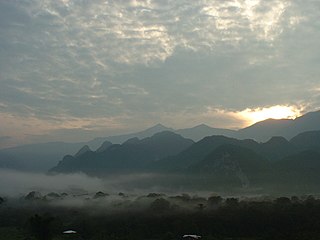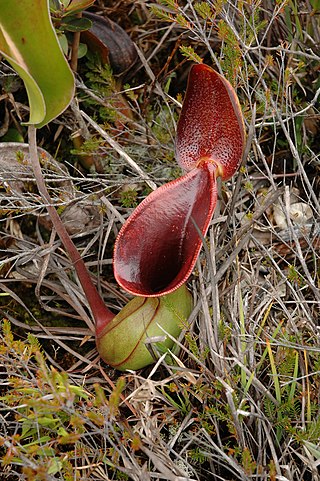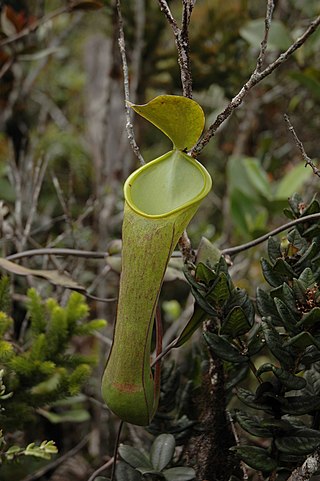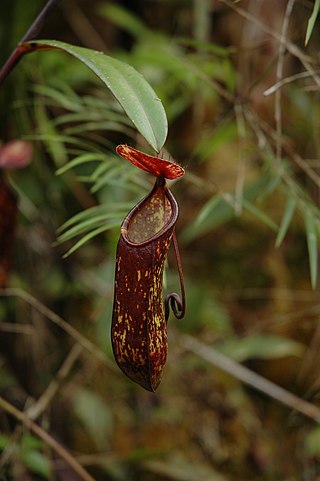
The Kelabit are an indigenous Dayak people of the Sarawak/North Kalimantan highlands of Borneo with a minority in the neighbouring state of Brunei. They have close ties to the Lun Bawang. The elevation there is slightly over 1,200 meters. In the past, because there were few roads and because the area was largely inaccessible by river because of rapids, the highlands and the Kelabit were relatively untouched by modern western influences. Now, however, there is a relatively permanent road route on which it is possible to reach Bario by car from Miri. The road is marked but driving without a local guide is not advisable, as it takes over 11 hours of driving to reach Bario from Miri through many logging trail junctions and river crossings.

The Penan are a nomadic indigenous people living in Sarawak and Brunei, although there is only one small community in Brunei; among those in Brunei half have been converted to Islam, even if only superficially. Penan are one of the last such peoples remaining as hunters and gatherers. The Penan are noted for their practice of 'molong' which means never taking more than necessary. Most Penan were nomadic hunter-gatherers until the post-World War II missionaries settled many of the Penan, mainly in the Ulu-Baram district but also in the Limbang district. They eat plants, which are also used as medicines, and animals and use the hides, skin, fur, and other parts for clothing and shelter.


Nepenthes veitchii, or Veitch's pitcher-plant, is a Nepenthes species from the island of Borneo. The plant is widespread in north-western Borneo and can also be found in parts of Kalimantan. It grows in lowland Dipterocarp forest, typically near rivers, and on ridgetops in mossy forests, from 0 to 1,600 meters elevation. Nepenthes veitchii usually grows as an epiphyte, though the form from Bario seems to be strictly terrestrial and has not been observed to climb trees.

Bruno Manser was a Swiss environmentalist and human rights activist. From 1984 to 1990, he stayed with the Penan tribe in Sarawak, Malaysia, organising several blockades against timber companies. After he emerged from the forests in 1990, he engaged in public activism for rainforest preservation and the human rights of indigenous peoples, especially the Penan, which brought him into conflict with the Malaysian government. He also founded the Swiss non-governmental organization (NGO) Bruno Manser Fonds in 1991. Manser disappeared during his last journey to Sarawak in May 2000 and is presumed dead.

Nepenthes lowii, or Low's pitcher-plant, is a tropical pitcher plant endemic to Borneo. It is named after Hugh Low, who discovered it on Mount Kinabalu. This species is perhaps the most unusual in the genus, being characterised by its strongly constricted upper pitchers, which bear a greatly reduced peristome and a reflexed lid with numerous bristles on its lower surface.

Mount Murud or Muru is a sandstone mountain located in Limbang Division, Sarawak, Malaysia At 2,424 m (7,946 ft), it is the highest mountain in Sarawak.
The Kelabit Highlands are a mountain range located in the northernmost part of Sarawak, Malaysia in the Miri Division. It hosts the Bario village. The highest mountains in this range are Mount Murud at 2,423 metres (7,949 ft), Bukit Batu Buli at 2,082 metres (6,831 ft), and Bukit Batu Lawi at 2,046 metres (6,713 ft). The current population of the Kelabit people is about 6,800.

Nepenthes hurrelliana is a tropical pitcher plant endemic to Borneo, where it has been recorded from northern Sarawak, southwestern Sabah, and Brunei. It is of putative hybrid origin; its two original parent species are thought to be N. fusca and N. veitchii. A thick indumentum of rusty-brown hairs covers the entire plant, a characteristic presumably inherited from the latter.

Nepenthes murudensis, or the Murud pitcher-plant, is a tropical pitcher plant endemic to Mount Murud in Borneo, after which it is named. It is of putative hybrid origin: its two original parent species are thought to be N. reinwardtiana and N. tentaculata.

Nepenthes muluensis, or the Mulu pitcher-plant, is a tropical pitcher plant endemic to Borneo. It grows in highland habitats at elevations of 1700 to 2400 m above sea level.

Ba'kelalan is a group of nine villages at Maligan Highlands of Limbang Division, Sarawak, Malaysia about 3,000 feet (910 m) above sea level and 4 km from the border with Indonesian Kalimantan and 150 km from the nearest town of Lawas. There are nine villages in Ba'kelalan. The villagers here belong to the Lun Bawang tribe.

Mount Mulu is a sandstone and shale mountain. At 2376 m, it is the second highest mountain in the state of Sarawak, after Mount Murud. It is located within the boundaries of Gunung Mulu National Park, which is named after it.

The Lun Bawang is an ethnic group found in Central Northern Borneo. They are indigenous to the southwest of Sabah, and the northern region of Sarawak, highlands of North Kalimantan, Brunei.

Bario is a community of 13 to 16 villages located on the Kelabit Highlands in Miri Division, Sarawak, Malaysia, lying at an altitude of 1000 m (3280 ft) above sea level. It is located close to the Sarawak-Kalimantan border, 178 km to the east of Miri. It is the main settlement for the indigenous Kelabit tribe. There are regular flights between the Bario, Miri and Marudi.
The Pulong Tau National Park is a national park in Kelabit Highlands in Limbang Division and Miri Division of Sarawak, Malaysia.
Pelophryne linanitensis, also known as the Linanit dwarf toad, is a species of toad in the family Bufonidae. It is endemic to Batu Linanit in Mount Murud in Sarawak, Borneo.
Pelophryne murudensis, also known as the Murud dwarf toad, is a species of toad in the family Bufonidae. It is endemic to Mount Murud in Sarawak, Borneo.
Ansonia vidua is a species of toads in the family Bufonidae. It is endemic to Sarawak, Borneo. Common names Murud black slender toad and widow slender toad have been coined for this little known species. The latter name refers to the black colouration of this species and the fact that no male individuals are known.
Indigenous rainforest blockades in Borneo began during the late 1980s and 90s. Borneo’s forests contain a variety of ecosystems, including rainforests, peatlands, mangroves, heath forests, and palm trees. The Sarawak Region had been ruled by the White Rajahs of the Brooks for the previous 100 years. These forests supply ecosystem services to Indigenous communities in Southeast Asia. Due to anthropogenic land-use changes, particularly logging and dam building, the Borneo rainforests have been deforested and fragmented at a rapid rate. Indigenous people, non-human species and entire ecological landscapes have been impacted by these land-use changes.














